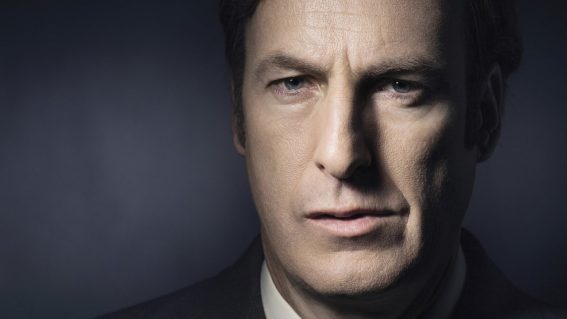New take on naughty nun tale Black Narcissus is as eerie and erotic as ever
The hills are alive with the sound of simmering tension and sexual repression.
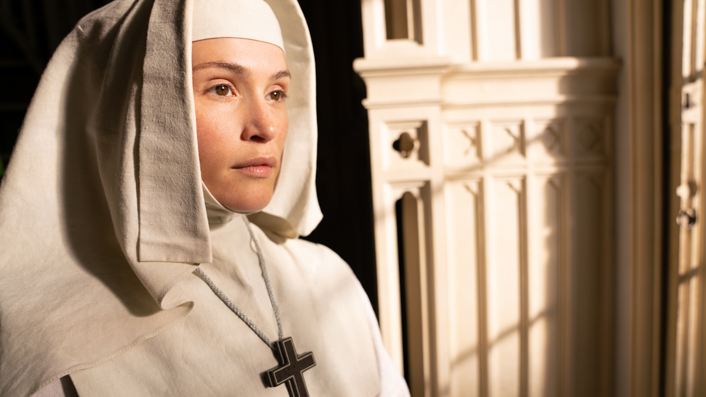
Gemma Arterton leads a convent of nuns slowly growing mad in a new adaptation of classic Black Narcissus – watch it now on Neon. As Katie Parker writes, it’s a smouldering, scintillating slow burn.
The hills are alive with the sound of simmering tension and sexual repression, in this haunting update of one of history’s most beloved naughty nun stories.
See also:
* Films and shows now streaming on Neon
* Everything new to coming to Neon
Based on the 1939 book by Rumur Godden and heavily indebted to the revered 1947 film adaptation, Black Narcissus has been reincarnated once again as a three part mini series—and over 80 years since its inception, this tale of a squad of nuns going slowly mad in the Himalayas remains as eerie and erotic as ever.
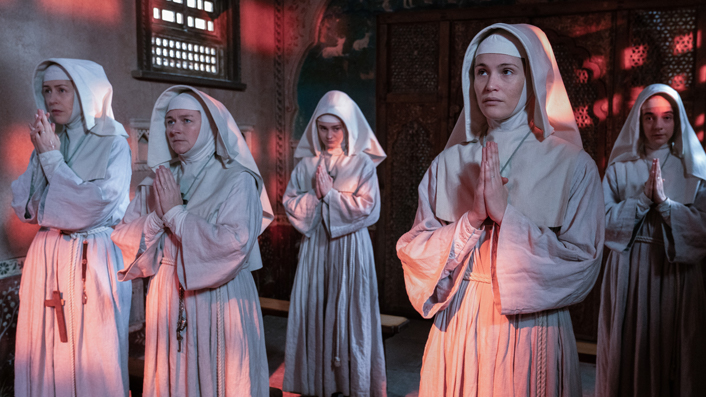
Sent to set up a convent, school and hospital at the remote Palace of Mopu, the squad in question, as handpicked by an already trepidatious Mother Superior (a brief but typically brilliant final performance by the late Dame Diana Rigg), are hardly the type to be making clothes out of curtains or bursting into song in their new hilly home. Led by the haughty and proud Sister Clodagh (Gemma Arterton), they are a stern bunch, and more than ready to bestow this sternness on the unsuspecting Hindu population who await them.
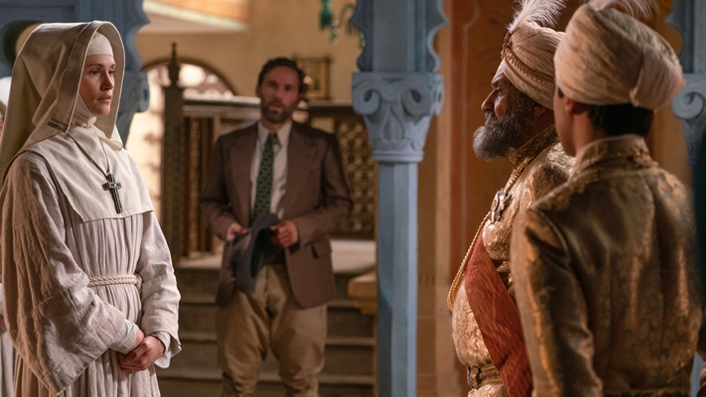
On arrival, however, it becomes apparent that there are more than a few things to get used to about the sisters’ new home. For one thing, it is very dark and spooky, with a not-super-welcoming caretaker (Nila Aalia) rattling around. For another the palace has a history: not only is it covered in mirrors and erotic phallic paintings (both no-nos for nuns), it was also where the previous occupant, a Hindu princess, leapt to her death in a fit of apparent madness.
Oh and it’s situated on a very high cliff top with a really big bell right at the top that they have to strenuously ring every day while looking down into the abyss below. Reassuringly this also happens to be where the princess mysteriously fell to her doom!
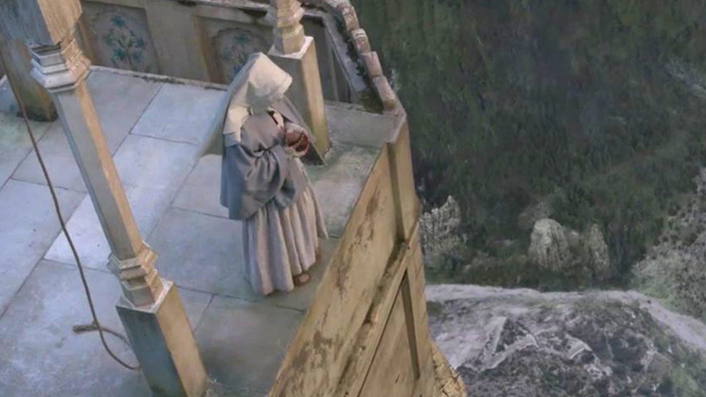
The nuns, however, are undeterred—even when they learn that an order of monks came and quickly went again before them, abandoning plans much like their own to settle there.
Yet, try as they might, their efforts seem to continually come unstuck. Alone in the strange, sultry mountains, each nun’s inner turmoil grows, while outside forces arrive to exacerbate it—particularly the smouldering WWI vet Mr. Dean (Alessandro Nivola, The Art of Self-Defense), who acts as an agent for the General who owns the palace, and who inspires a decidedly unholy air of competition among the sisters.
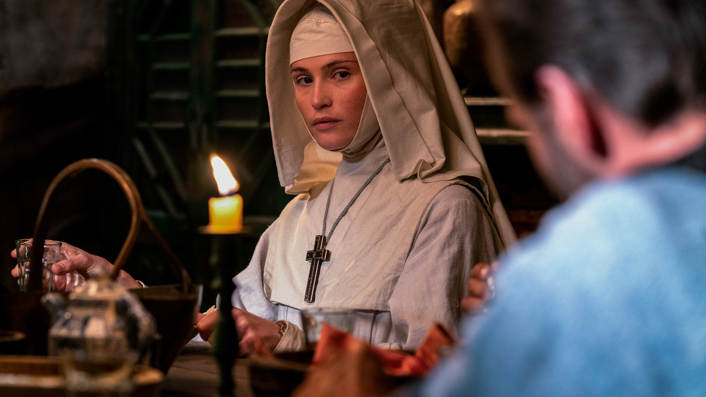
Is it just the isolation getting to them? Or are supernatural forces at play? As tensions flare and the already troubled Sister Ruth (Aisling Franciosi) grows ever more unstable, the nuns’ tenure at the palace seems more and more like it may be heading for disaster.
Admirably restrained and carefully, creepingly paced, over the three hour-long episodes the tension that bubbles away beneath the surface gradually threatens to boil over—edging, not sprinting, deliciously toward its crescendo.
When the film Black Narcissus was released in 1947, it was just months before India achieved independence from Britain and finally became free from British rule. As such it was imbued with a kind of political significance as well: the story of a group of unwanted and unneeded foreign occupiers, attempting to insert themselves into a place that would ultimately, violently, reject them. 73 years on, it is curious to note that this element of the story remains pertinent, and that the lessons presumably learned at this time often still seem to be forgotten.
Faithful to its source material and respectful of its cinematic predecessor, Black Narcissus is at once a horror, drama and romance, heavy with strange, stirring atmosphere and spurred on by excellent, enigmatic performances. As Sister Clodagh, Arterton is at once awful and understandable, fiercely burying hidden desires to further her own ambitions. Franciosi meanwhile is a standout as the increasingly unhinged Sister Ruth, her angelic face belying a dangerously spiralling mental state.
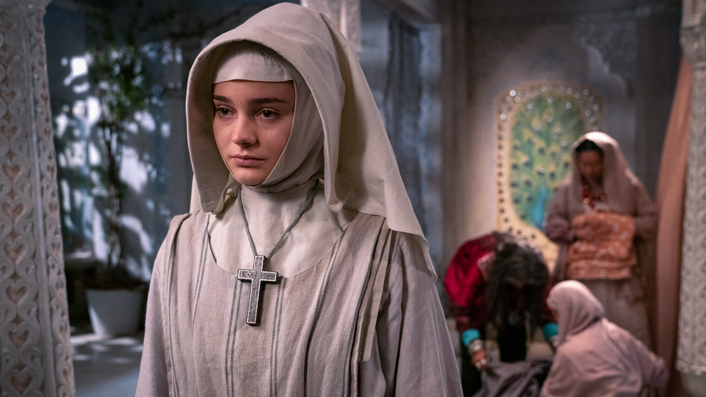
For some, Black Narcissus may be a bit slow, and if you like a faster pace then you could easily get frustrated by all the slow, spooky smouldering at play here. Yet, increasingly it seems that perhaps the tides are turning on splashy, speedy television and that appetites are growing for something a bit more considered—Black Narcissus eschews binge-readiness in favour of a more scintillating slow burn, and is all the more spine-chilling for it.
In this way, though it is a coproduction between US network FX and the BBC, Black Narcissus feels much more in the vein of the latter’s classic British stylings, not only for its largely British cast, but for the steady, subtle tone that imbues it with an eeriness rarely found in modern television drama. Combined with stunning set pieces, dramatic landscapes and a great cast, Black Narcissus is both horrific and erotic—even after all these years.









